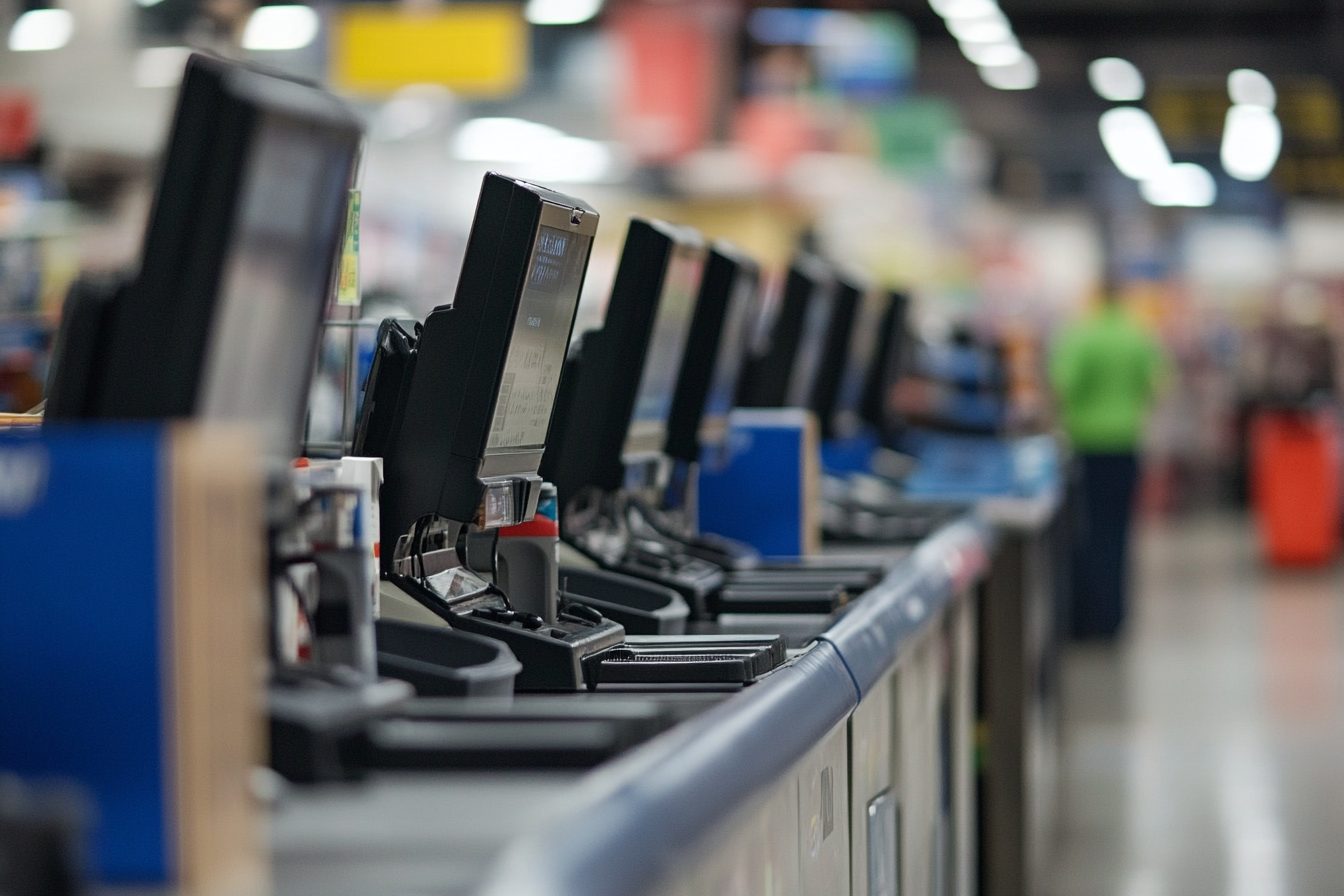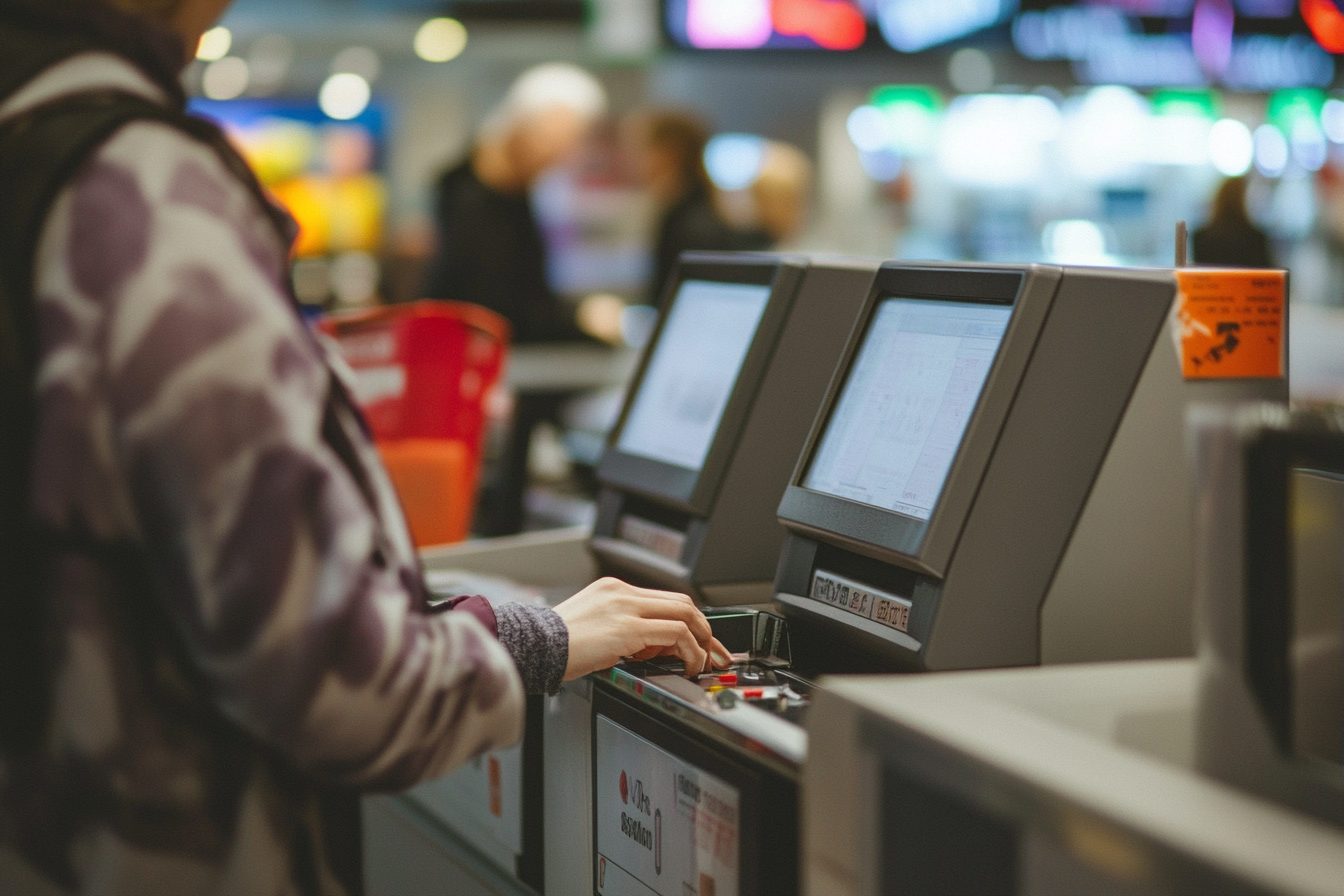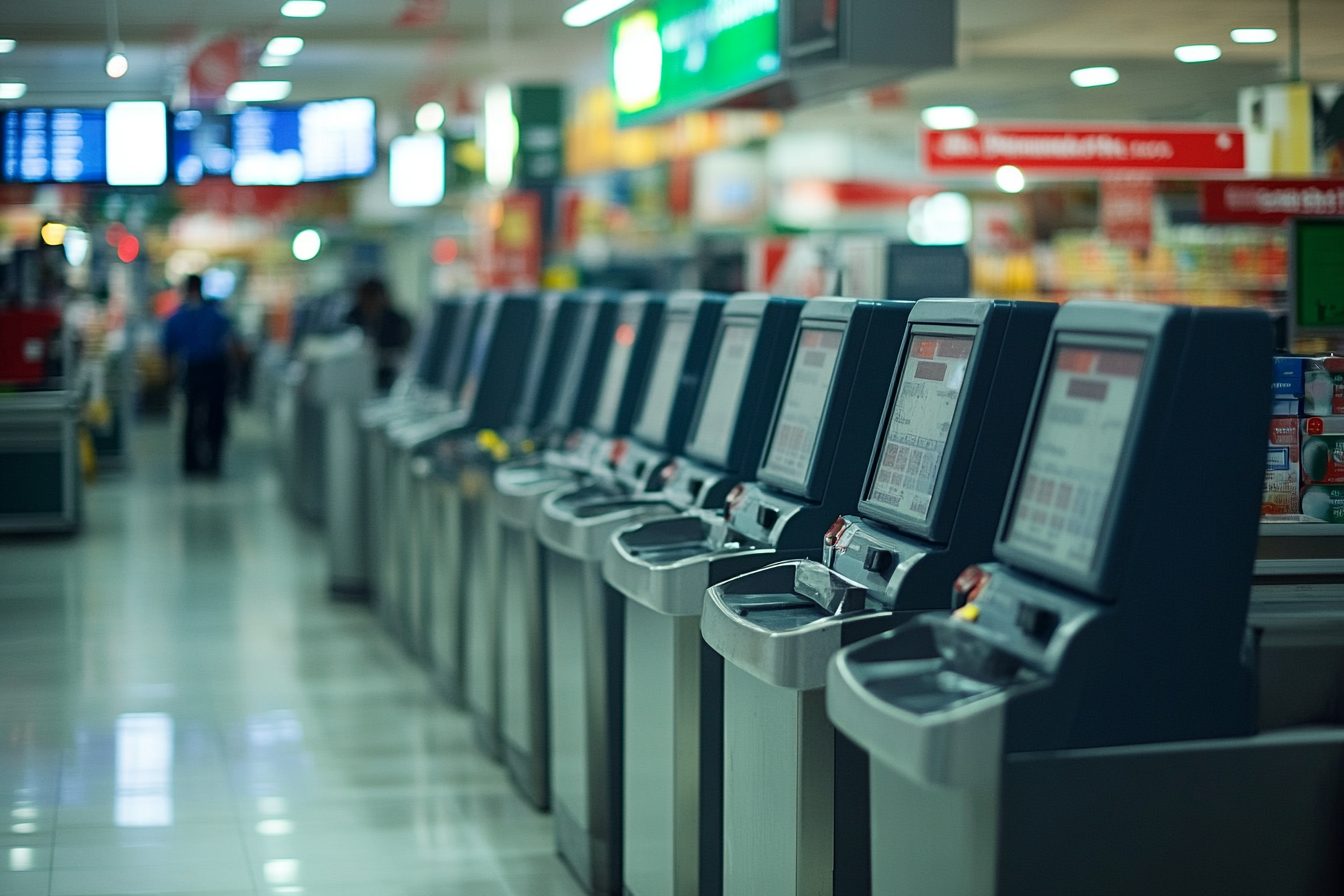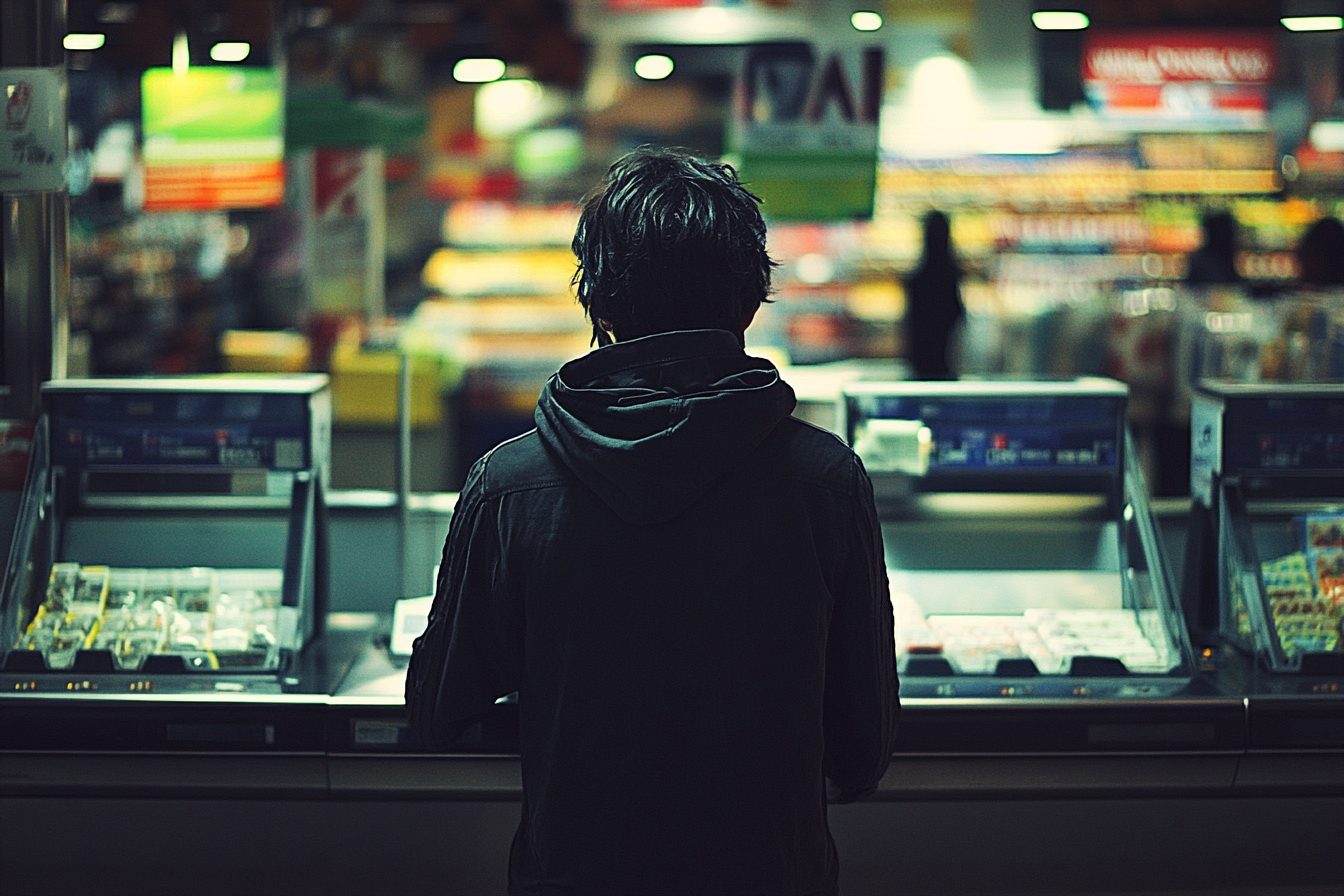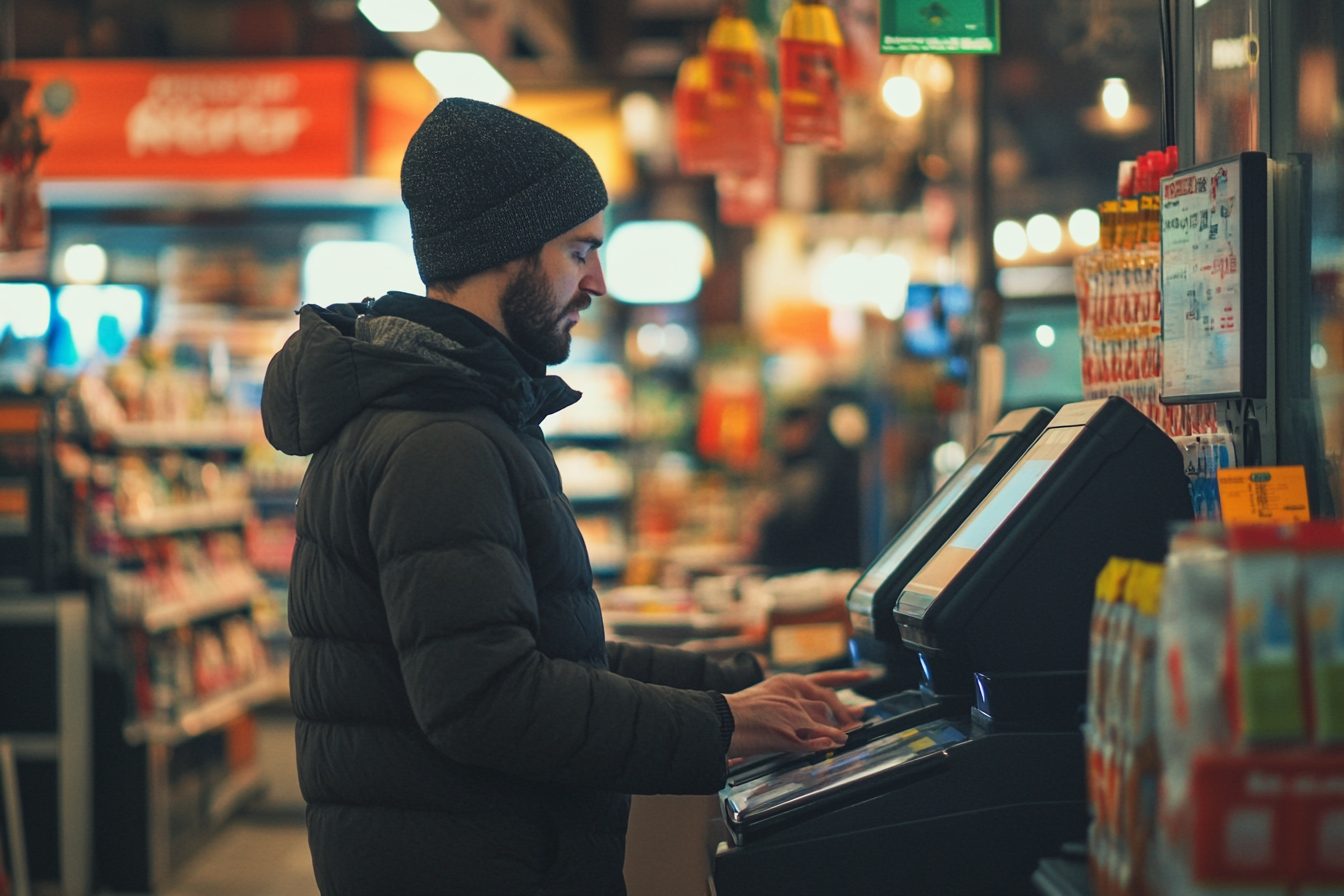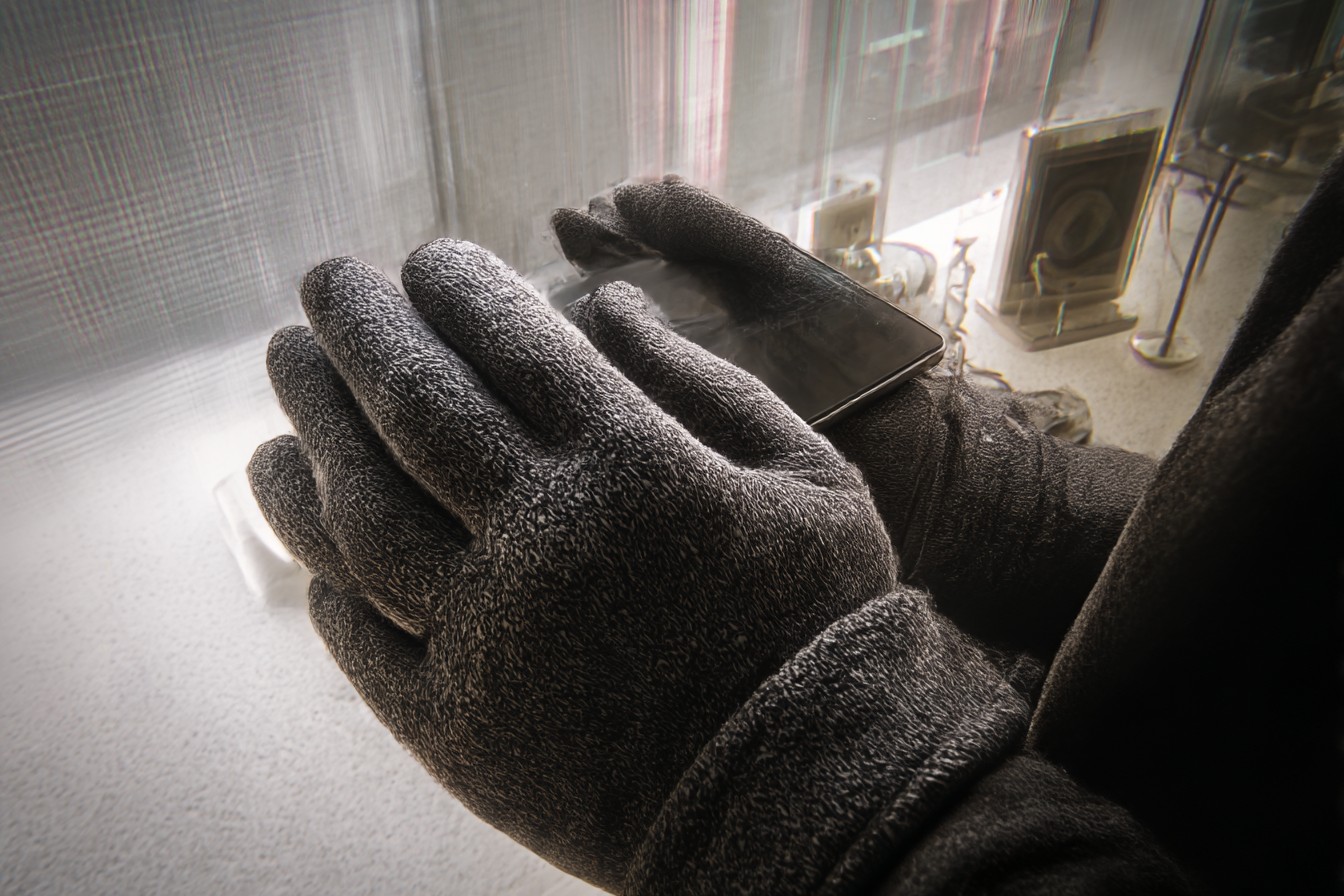Not long ago, purchasing food and drinks was a very simple activity. You would place your items on the counter, engage in minimal conversation with the cashier, or at least acknowledge each other, and carry on. This method operated perfectly for centuries.
However, some brilliant individual—most likely someone who’s never experienced the need to frantically grab a roll of toilet paper—came up with the groundbreaking concept of decreasing human interaction in that flawless process. I came across my first self-checkout about five years ago in my local supermarket. I distinctly remember standing in front of the kiosk holding a basket containing precisely three items: a loaf of bread, cheese, and a bottle of wine.
I’ve always considered everything to be clear-cut. Turns out, that was not the case. “Item in bagging area unexpected,” the machine marked my card for failure, and, with what felt like the authority of a prison warden, commanded everyone standing within earshot of me—which I roughly estimated to be around fifty feet—to gaze in my direction as if I were attempting to sneak something past security.
Without even beginning the scanning process, the next step was ‘place item in the bagging area’. I was already being accused so early on. As I did what I was ordered and started trying to be compliant, ‘item removed from bagging area’ warning lights began flashing.
Kindly return this item to the designated bagging area.”
I could perceive a queue accumulating behind my back. The accumulated tension from my wait had somehow migrated down my back. The bread, let’s be honest, was satisfactory.
In this case too, scanning was straightforward, which is quite commendable, considering the effort I put into it, probably around two seconds, maybe even two-and-a-half. The next problem was, of course, the cheese. “Approval is needed” arrived.
It appeared that I summoned some staff who, by the looks on their faces, would literally give anything to be elsewhere. How did they justify these depressing decisions? My plundering of Brie, it seemed, required oversight. Unsurprisingly, my choice of wine triggered yet another alert.
When I departed the store, the three-minute task that should have been completed in under three minutes had somehow ballooned to fifteen minutes, and this lengthy endeavor invariably robbed me of precious, irreplaceable moments that, even worse, I have lost. Unlike my other experiences, the terrible parts flooded me all at once.
Last Tuesday, I witnessed an elderly woman in her seventies teetering on the brink of tears as she struggled with a self-checkout machine that refused to accept her bundle of bananas. The self checkout attendant was, as usual, multitasking and managing three other customers. The woman was trapped in some form of technological limbo with their bananas waiting to be checked out. With bananas in hand, she appeared to be hovering in some sort of technological no man’s land.
These “self-service” stations are laden with a contrasting irony—the need for assistance—and support is rarely provided. It’s difficult to remember the times when there were hitches in the system for a smooth journey. The same goes for those spinning in circles with the same error message. Initially confounded, then annoyed, and finally apathetic.
To me, it seems clear that they lost to the machine. Who hasn’t felt that way with battling with the office copier? People who say these systems were crafted in lieu of making the shopping experience faster and smoother are left infuriated, especially when it was actually the opposite intent.
Self-checkout lanes do not appear to decrease the speed with which customers are served as compared to conventional cashier lines, according to studies. Indeed, as per a McKinsey report that I encountered during my research on this technological horror, self-checkouts have the potential to average transaction times that are as much as 50 percent longer than those at attended lanes. However, the most important issue is not just the inherent absurdity of the system and its operational shortcomings.
Of more concern is how these elements link up with a dramatic shift in burden, which is not very visible but insidious. With self-checkout, the store has, in essence, shifted the chore of scanning and bagging to the customer without offering any discount or incentive in return. We have turned into trained, unpaid cashiers thrust into an artificial setting that does nothing to benefit the store or us, surrounded by cameras and sensors that assume we’re all thieves.
So gentle is my friend Bernard’s personality that he seems to apologize to furniture whenever he bumps into them. Last week, he told me he completely freaked out at a self-service checkout machine. Triggering the meltdown was a coupon the system laid its hands on, but for some reason, couldn’t accept.
After a myriad of failed attempts to make the machine operational, and no help in sight, he decided to abandon his grocery cart and storm out in anger. To me, the part of his narrative was both jarring and totally reasonable. These machines’ illusion of having a choice is what gets to me the most.
I suppose it is for the retailer. He pretends that by investing a few cents in labor-cutting, they will somehow improve the service. In truth, these ‘for your convenience’ statements are an insult and relabel their assault as therapy. As for myself, of course, I now have developed coping mechanisms.
Now, I choose my checkout line based on a complex calculation that includes variables such as the number of items in my cart, the time of day, and the chances of needing to show ID. To put it simply, I am proficient at the rapid scan-and-bag. There was never a day I wished for such skills.
None of the above seemed appropriate then, and do not seem so now either. It’s told that modern-day warriors know how to survive with the bare minimum in the outdoors. From time to time, I consciously decide to “fight” by selecting a human cashier. There’s, I suppose, a form of rebellion against automation that comes when one interacts with a human. The bond felt in an interaction is devoid of any complexity or intimacy.
I approach the cash register, transact, and simply exit the store. It is clear that no thought or effort needs to go into such a procedure. As simplicity has somehow led me to explain what my actions are right now… I guess I could tell you something that is part reality and part fiction.
Call them whatever you want however these lanes are becoming an extinct species. It seems that with the advent of self-checkout registers, these lanes are being eliminated. According to the prophecy, every other person will have to become an undeclared cashier, diligently scanning their own products while devoid of trust from the accompanying technology. The most constructive critique of this system definitely came from my nephew who is just 19 and in all fairness, fully supportive of any modern advancement.
“Fighting with a machine for five minutes is, in my opinion at least, far less preferable than standing in a line for ten minutes,” he said.
Each error message and other such alerts alongside each requiring manual help only serve to tire one’s patience and demoralize. These checkout systems are a lot more than unhelpful; self-checkout machines sculpt wrong failure terminals into competitions and assertions making their users struggle with the faceless void speaking words intended to belittle. The artificially intelligent systems are proclaiming failure in such an idiotic manner doing totally devoid of any respect. -this scrutiny acts persistently.
It is exactly where we are facing crossroads: difficulty and sanity. Forced decisions irritatingly abundant. People now question whether they would prefer to endure waiting behind a line with everwaiting human operators as their reigns shred alongside digitized authoritative judgment for payment. To be precisely, unsparing automated robotic order. Out of which, sadly, I do not see much relief at the current pathway shedding light onto our path as we prepare to cross.
As more retailers adopt these systems, and as human cashiers are becoming more of a rarity, we are creating a shopping experience that is more annoying and less efficient than is necessary. The next time you find yourself trapped within the self-service checkout border of torment, remember this – you are not alone. It’s a collective suffering as we grapple with barcodes, grapple with bags, and collectively ponder the paradox of why, in striving for progress, we’ve turned one of life’s simplest transactions into an overly convoluted endeavor.
If you listen closely, someone is likely letting loose a passionate tirade directed at a machine boldly proclaiming there is an “unexpected item in the bagging area.” It’s probably just me – still trying to purchase that wine.

